Your decision is made, and you are ready to set down roots, to buy a little piece of Virginia to call your own. You have a list of real estate websites to explore and a stack of white pages sitting on the kitchen table – all ready to go. This is great and how the vast majority of homebuyers begin their journey; after all, the prize of a new house is the most delightful piece of the home-buying process. But have you done your research? Do you actually have the ability purchase a house?
In years past, almost anyone could quality for a loan. It was as simple as going to the bank with minimal paperwork and walking out with the seal of approval for your new loan. Unfortunately, this got a lot of people and well-meaning banks in trouble. Customers were borrowing way more than they could afford, and banks were giving out loans that could not be repaid. In some cases, the banks knew that repayment would never be a possibility for the borrowers and still granted loan approval. Eventually, the cycle spiraled out of control, and the United States’ economy crashed in 2008 and 2009. As a result, the guidelines for borrowing money are now much more stringent, just as much for your protection as the bank’s.
The home-buying process can be frustrating, lengthy and even heartbreaking at times, especially when it comes to getting financing for the first time. However, it does not have to be. Arm yourself with the facts, and discover these practical ways to get your mortgage approved.
1. Learn About the Loan Approval Process
When looking at buying a home for the first time, there is much more to consider than just your income and the price of the home. This fact will become very clear the second you head to the bank. With the abovementioned housing crisis of the 2000s came a slew of changes to the loan process, many of which are behind the scenes but still affect you nonetheless. Learn exactly what the loan process entails in your area to stay ahead of the game. Find out what you need, documentation-wise, income-wise and credit-wise to successfully navigate the preliminary stages of loan approval and beyond.
In addition, ask questions about what happens during the home-buying process. All banks require a title search and title insurance, as well as flood certification and an appraisal. Some banks go further by requiring a survey. Sometimes requirements change based on the type of loan you desire. There are FHA, VA, USDA, fixed-rate, adjustable-rate and balloon mortgages, just to name a few. Having a basic knowledge of the differences makes it easier for you to communicate effectively with your loan officer and get approved.
2. Ensure Your Employment Is Consistent
One of the major things that lenders look at when considering a borrower is his employment history. Banks like consistency – someone who stays in one place for a while. This means that it is vital for your loan future that you keep your work steady, at least until after the closing. Typically, banks want to see steady employment for a minimum of 2 years. Tax returns and pay stubs are required as proof, and some banks even require a letter or a reference from your job. Do you earn your living as a freelance worker? No problem, as long as you have the proper documentation in place and you have 2 years of filed tax returns as proof of income.
3. Budget and Save
You know how much you make every month and how much debt you possess. One of the best things you can do when trying to get approved for a loan is to dig a little deeper – figure out exactly what your monthly expenses are and where your money goes. Student loan payments, car loans, credit cards, medical bills, insurance, etc. should all be considered. Once you know how much you have left over every month, that is when you can calculate how big of a house payment you can afford.
Of course, knowing your available income is not the only reason to budget, you also need to start saving. Buying a home comes with many expenses, including the title search and insurance, the appraisal, inspections and most importantly, your down payment. While VA and USDA loans provide 100 percent financing with no down payment and FHA loans require as little as 3.5 percent, there are loans types out there that require much more, so it is best to be prepared. Further, while considering your application for a loan and determining what type of financing is correct in your situation, the loan institution likes to see some available funds as they review your bank accounts.
4. Get Your Credit in Order
A low interest rate is highly desirable when getting a loan, because lower interest means less you pay over time. Perhaps the easiest way to ensure you get the best interest rate available to you is by having a high credit score. Further, if your credit score is too low, your loan request may be denied entirely. There is only one way to find out where you stand – check it. Most people know that you can request a free, yearly copy of your credit report from one of the three credit reporting bureaus, but we highly recommend calling your local mortgage professional as that will be the exact report they will be working with to get your approval. A good mortgage professional will also help explain your score, identify inaccuracies and make recommendations to increase or maintain your score to save time and avoid delays during the approval process. Your score can be affected by late or missed payments, reports from collections agencies, maxed out credit limits, bankruptcies and much more. You can always correct your number and bounce back, if the need arises, it just takes time. If you would like a free credit report consultation, feel free to call us or fill out our consultation form here.
A FICO credit score below 620 is considered bad. Most lenders will not allow an FHA loan for borrowers with a credit score below 500 and require a higher down payment for those with scores of 585 and below. From 620 to 689 is considered fair credit, while 690 to 739 is good. Anything above 740 and up to 850 is excellent, and those with scores in this range benefit from the lowest down payments and monthly interest rates.
5. Gather All Pertinent Documentation
To properly analyze your financial forecast, lenders need to see the proper documentation. Two years worth of tax returns, recent pay stubs and bank statements, and investment documentation are just some of the things that will be requested from you. If you are self-employed and the sole borrower, further proof of employment and income may be required. The lender will learn about your student and auto loans, as well as your credit cards, through your credit report, but it is a good idea to have the names of all the companies and your payment information gathered, just in case the bank should pose a question.
6. Begin the Prequalification and Preapproval Process
From nation-wide institutions to hometown banks, the lending options in America are vast. Once you decide what option is right for you, it is time to begin the prequalification and preapproval process.
The vast majority of borrowers do not realize that these are very different things, and truth be told, being prequalified for a loan does not hold much weight in the home buying process. Prequalification is something that can be done online – or in person – by any lending institution based on a number of simple factors, such as your income-t0-debt ratio and your credit score. It is an initial analysis to see if that institution is willing to give you a loan and in what amount. Get prequalified? Great – move onto preapproval.
When it is time to get your loan preapproved, this is when all of your time and preparation pays off. The bank will take an in-depth look at your finances, investments, debt and more based off of the documents you provide and your credit report. Presuming all things check out as planned, you then become preapproved for a loan and are well-on your way to homeownership.
Presenting your preapproval to sellers as you search for your dream home makes you an attractive candidate as a buyer. It shows you are serious and that the bank is willing to back your transaction. This saves time on both ends and makes the whole closing process run a little smoother.
Few things are more stressful than buying a new house; do not let getting approved for a home loan be one of the contributing factors. Sure, there are many steps, and if your ducks are not in a row, it can be lengthy, as well. Stay one step ahead of the game by following the advice in this article, and make your dreams of homeownership a reality.
Rick Gilbert
1903 Manakin Road
Suite A
Manakin-Sabot, VA 23103
Phone: (804) 784-4364
Fax:(804) 784-4372


